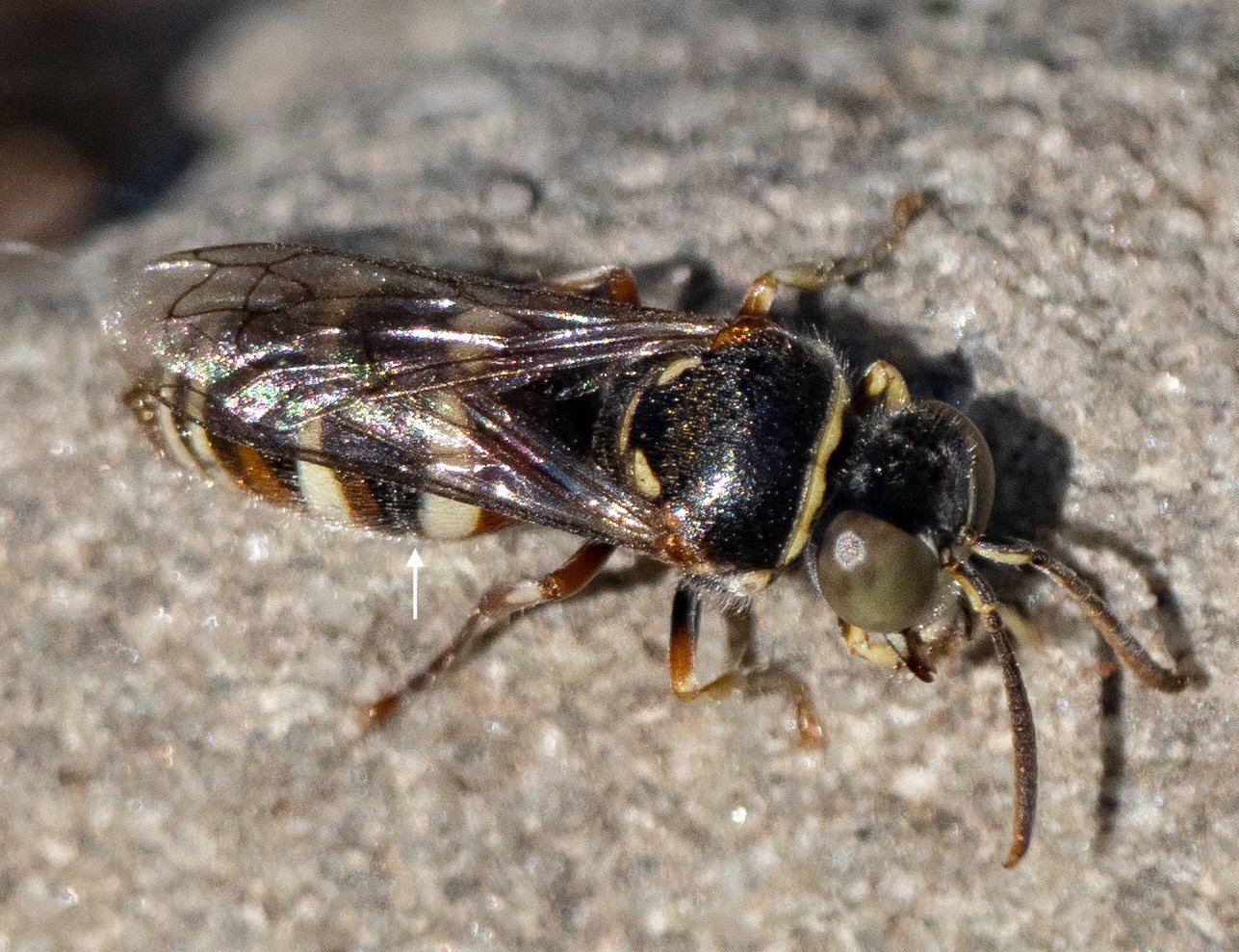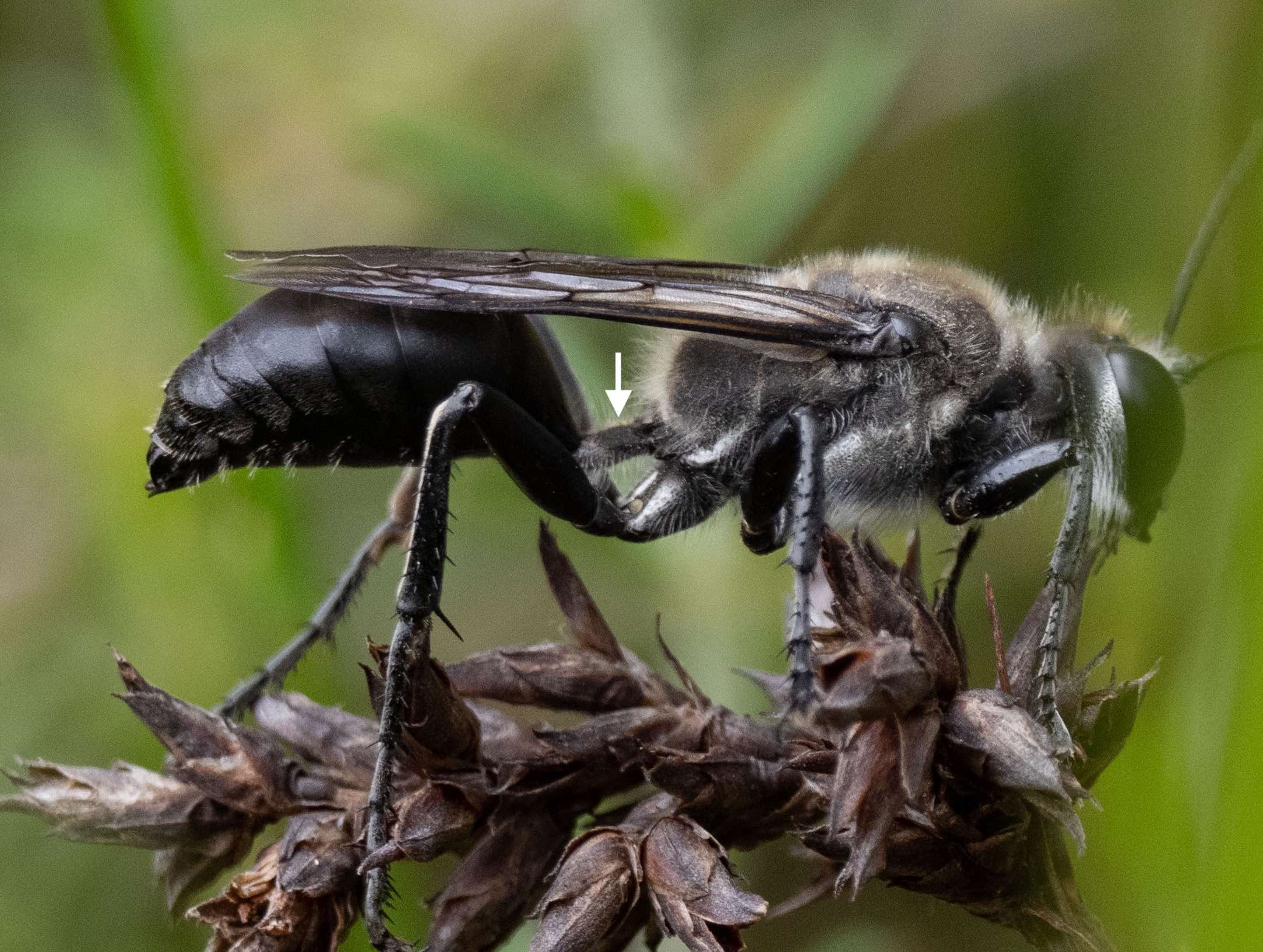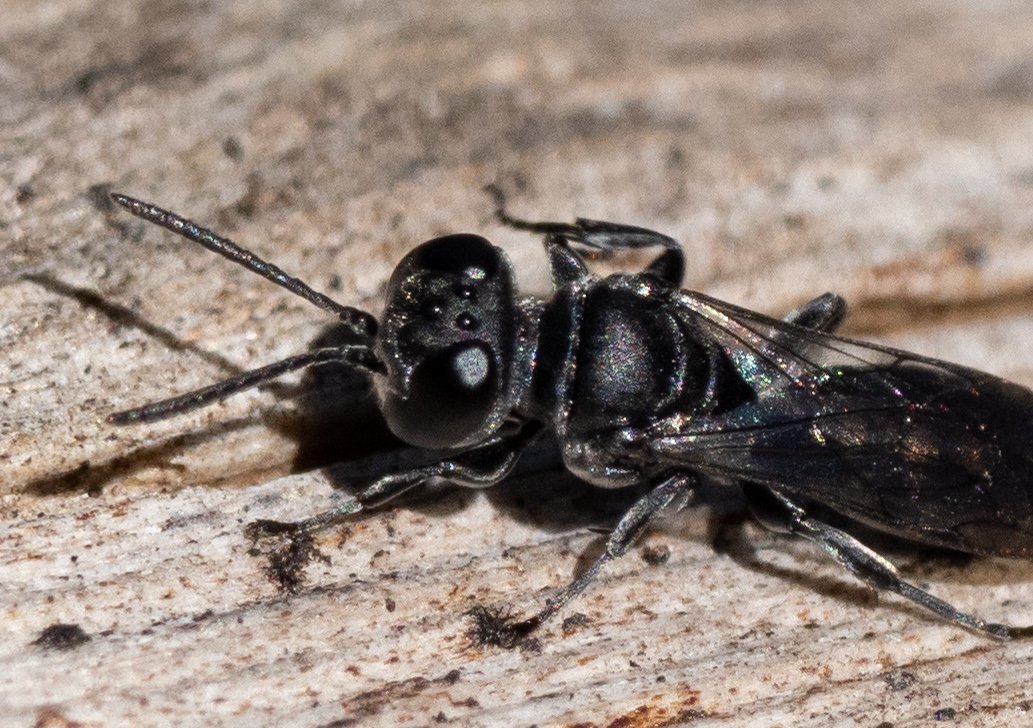
gaster sessile
TI at apex (white arrow) nearly as broad as TII
Bembicinae: Bembicini (Stizina): Bembecinus
(Yamba, Dec. 2022)

first gastral segment narrow ...
… and constricted at apex (white arrow)
Bembicinae: Bembicini (Gorytina): Austrogorytes

gaster constricted between segments
Philanthinae: Cercerini: Cerceris

gaster pedunculate
First gastral segment nodose at apex (white arrow)
Crabroninae: Crabronini: Podagritus

cylindrical petiole
First gastral segment elongated, cylindrical, and comprised of sternum I only (white arrow)
SPHECIDAE: Sphecinae: Sphex

normal ocelli
All three ‘well-developed’ ocelli are prominent, quite large, and reflective.
[white arrow = single, median ocellus; green arrows = paired, posterior ocelli]
Bembicinae: Bembicini (Gorytina): Austrogorytes

normal ocelli
The ocelli are reflective and readily seen on the hairless vertex (top of head) of this wasp.
Crabroninae: Trypoxylonini: Pison

normal ocelli
Even from this angle, the nearest posterior ocellus is clearly visible (white arrow)
Bembicinae: Bembicini (Stizina): Bembecinus
(Yamba, Dec 2022)

ocelli greatly reduced or absent
Ocellar lenses of Australian Bembix are greatly reduced … “virtually absent” (Evans & Matthews, 1973). Certainly none are visible here (although the sand-filled hair does make it difficult to judge in this photo).
Bembicinae: Bembicini (Bembicina): Bembix
(Yamba, Dec 2022)

ocelli lenses reduced or absent
There are obvious but ill-defined bumps at the site of ocelli. I assume these are residual, and that the lenses are reduced. But this illustrates the limitations of field photography for some features.
Bembicinae: Bembicini (Bembicina): Bembix

no evidence of posterior ocelli
From this angle, the posterior ocelli would normally be visible atop the vertex (white dashed arrow).
Crabroninae: Larrini: Tachysphex

posterior ocelli scar-like
There is no sign of lenses at the site of the posterior ocelli (green arrows). The median ocellus (white arrow) is round, but tiny.
Crabroninae: Larrini: Tachysphex

antennal sockets low on face
The bases of the antennae (white arrows) appear contiguous with the upper edge of the clypeus (star)
Crabroninae: Trypoxylonini: Pison

exserted labrum
The elongated labrum characteristic of many Bembix.
Bembicinae: Bembicini (Bembicina): Bembix

labrum hidden from view
The same individual as in the previous image, but here with the labrum tucked beneath her head, out of sight.
Bembicinae: Bembicini (Bembicina): Bembix

propodeum with sharp edge
Bembecinus is a genus I’m not familiar with (yet). Indeed, the sightings we made in northern NSW this summer were a first for us. So although my identifications remain a little tentative, they seem to tick the right boxes – including the “propodeum compressed & sharply edged lateroposteriorly” (green arrows).
Bembicinae: Bembicini (Stizina): Bembecinus
(Yamba, Dec 2022)
















